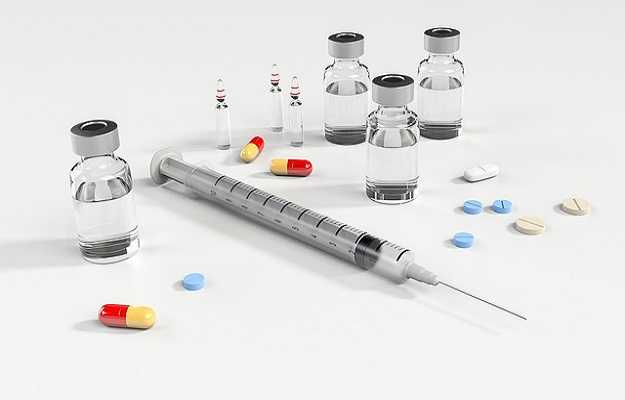Chelators or chelating agents are either organic or inorganic compounds that can bind with metals and form ring-like structures called chelates. An ideal chelating agent should have the following properties:
- Low toxicity
- Highly soluble in water
- Ability to cross cell membranes
- Not affected by the pH of body fluids
- Have the same distribution as the metal (so it can reach all places the metal is)
- High affinity towards the metal (so it can quickly bind with the metal and eliminate any competition)
- Ability to form chelates that are less toxic than the metal itself
Here are some of the commonly used chelators:
1. BAL (British Anti Lewisite) or 2,3-Dimercaprol: This is one of the oldest chelating agents that is used for the treatment of lead poisoning, gold and mercury poisoning, and arsenic poisoning. BAL solution is oily but clear and has a pungent smell. Due to its oily nature, BAL is given through a deep intramuscular injection. The compound has some of the following side effects:
BAL has the following drawbacks:
- A pungent rotting egg-like odour
- Cannot be given orally and the intramuscular injection is painful and can trigger allergies in some
- Has a low therapeutic index (can be toxic even at slightly elevated doses)
- Can cause arsenic accumulation in the brain and testes
2. DMSA/Succimer or meso 2,3-dimercaptosuccinic acid: DMSA is an analogue of BAL that is mainly used to treat lead poisoning. It may also be used to treat mercury or arsenic poisoning. Unlike BAL, DMSA can be given orally as it can get absorbed in the digestive tract. Additionally, it has a greater therapeutic window than BAL and is not very toxic.
A major drawback of DMSA is that it cannot cross cell membranes. Some side effects of this compound include:
- It may increase the levels of serum aminotransferase, indicating slight liver toxicity. Though, no major effects on liver have been reported in clinical settings so far.
- It may alter copper metabolism in the body
- Respiratory discomfort
- Eye irritation
- May affect fertility and negatively affect the fetus
3. Calcium disodium edetate (CaNa2EDTA): CaNa2EDTA is a derivative of a chelating agent called EDTA (ethylenediaminetetraacetic acid) and the most commonly used chelator for the treatment of heavy metal poisoning, especially lead poisoning. It is also said to be beneficial for removing plaque from blood vessels and reducing blood vessel inflammation (read more: what is atherosclerosis?). CaNa2EDTA looks like a white crystalline powder. It is soluble in water and organic solvents and is not absorbed properly in the gut. So, this chelator is administered through the intravenous (IV) route. Some drawbacks of CaNa2EDTA include:
- It cannot cross cell membranes and hence is unable to chelate heavy metals inside body cells.
- CaNa2EDTA injection can be painful.
- It tends to promote the redistribution of lead from other tissues to the brain.
CaNa2EDTA use is associated with the following risks and side effects:
Long-term treatment with CaNa2EDTA can also deplete the body’s reserves of manganese, copper and zinc.
4. d-Penicillamine or DPA: DPA is a degradation product of penicillin. It is easily absorbed in the gut and is hence given both orally or through an intravenous line. The drug does not have many adverse reactions though symptoms like thrombocytopenia, aplastic anaemia and leukocytopenia may occur. Thrombocytopenia refers to low platelet count. Aplastic anaemia is a type of anaemia in which the body doesn't make enough red blood cells. Leukocytopenia is lower than normal white blood cells.
Long-term use of DPA can lead to nausea, vomiting and anorexia. Some other toxic effects of DPA include:
- Gastrointestinal problems
- Proteinuria or presence of protein in urine
- Loss of taste
Those who are allergic to penicillin may develop an allergic reaction to DPA administration.
In severe cases, DPA may lead to lupus erythematosus, membranous glomerulopathy (a disease that affects the filtering capacity of kidneys) and hypersensitivity pneumonitis (inflammation of lungs).
5. Deferoxamine: Deferoxamine has a higher affinity for iron than any other heavy metal and is hence used for the management of iron related diseases like thalassaemia major. It is also used to reduce aluminium accumulation that occurrs in dialysis patients and in some anaemia patients who need blood transfusions. However, deferoxamine does not bind to iron in haemoglobin or transferrin (the protein that transports iron in the body). Once it binds with iron, deferoxamine is mostly expelled through kidneys and faeces (through bile). Some side effects of deferoxamine include:
- Auditory (ear) and ophthalmic (eye) toxicity
- Allergy
- Skin irritation
- Infections
- Adverse effects on kidneys, lungs and brain
Deferoxamine is avoided in less severe cases of iron toxicity due to its various side effects on body.

















